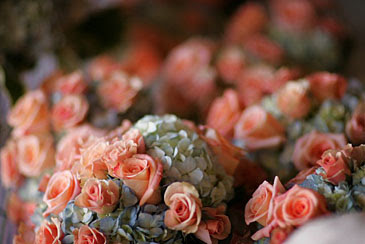It is always amazing when seemingly well informed people
don't RSVP when the invitation clearly requests it.
Knowing the total number of expected guests is critical at
weddings and other large events. Costs
and deadlines involved in meal planning and preparation require that
information. One wonders why some people
don't feel the need to reply. Emily Post has said, "No one is
obligated to accept an invitation or to explain their reasons for not
accepting. However, when someone is kind
enough to extend an invitation, one should be just as kind and reply to the
invitation." Not everyone gets it!
What can you do when you have invited someone to your
wedding and have included a reply card with a return date and you still haven't
heard? Ask for help! A good solution is to ask family members and
bridesmaids to help you contact those people who have yet to reply. If a phone call is in order, helpers can say
something like this: "Hi
______. This is ________ and I am
calling to make sure that you have received the invitation to ______________'s
wedding. The bride has not heard from
you as yet and needs to know if you plan to attend. The guest count needs to be in by
_____________. Everyone is looking
forward to seeing you. Will you be
there?" If you are leaving a voice
mail message, add "Please call me back at ______________.
If you are
an invited guest, here are helpful hints for you to remember.
- · Respond in the same manner that the invitation was issued. If it came via email then an email response is in order. Likewise with a text message. Hopefully few wedding invitations come that way.
- · Reply as soon as possible. Don't put the invitation in your "to do" pile unless you need to ask the availability of the other person whose name may be on the invitation with yours.
- · Keep your reply brief. If you cannot attend, there is no need to go into great detail about why you can't be there.
- · If a reply is not requested, it is not necessary to respond. However, it is nice to let the host know when you cannot attend.




